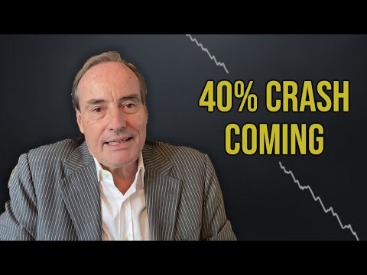Stochastic Oscillator Formula
Contents

It measures the https://topforexnews.org/ of the RSI relative to its high-low range over a certain period. The chart below shows the two indicators applied on a chart. A common question among traders is the best stochastic oscillator settings to use when day trading. In most cases, it is usually recommended that you use the default settings provided by your trading platform. When you put a stochastic oscillator on a chart, you will see two lines of different colors,the main and signal lines. Ideally, when the two lines are below 20, the pair is said to be oversold and when the lines are above 80, it is said to be overbought.


An instrument won’t necessarily fall in price just because it is overbought. Similarly, it won’t automatically rise because it is oversold. Overbought and oversold merely mean the price is trading near the top or bottom of the range for the specified time period. The stochastic oscillator indicates the stability with which the price closes near its recent high or low by comparing the current price to the range over time. A reading of 80 indicates that the instrument is on the brink of being overbought. This two-line indicator can be entered into any chart and fluctuates between 0 and 100.
Stochastic Oscillator Trading Signals
The https://en.forexbrokerslist.site/ oscillator’s settings also indicate the periods of smoothing of %K and %D lines, which is a moving average of %K. On the chart above, there is an example of the scalping strategy for a long trading range. As we can see, the price hasn’t reached the take profit level but turned around.

Since the signal occurred below 20%, the risk of it being false is low. Here, it’s worth opening a long trade near the highest point of the crossover candlestick. On the chart above where the lowest prices are, I marked the entry level with a green line.
SMA lines lag trend changes
In an ideal scenario, it should cover several previous candles. A https://forex-trend.net/ pattern is adjusted when the new highest price forms a lower-than-previous high, but the stochastic has a higher high than the last closing price. It leads to a short-term price trend decline and a reversal.
- During choppy market conditions, this can happen frequently.
- It measures the level of the RSI relative to its high-low range over a certain period.
- In many ways, the key to its success is its relative simplicity.
- Though invented in the 1950s, it’s still widely used by traders.
- In the case we trade forex, like the price chart above, the numbers can correspond to five signals of the stochastic oscillator.
As you will see, the indicators remain under the 20% level indicating that momentum is relatively weak. That is until the fast stochastic oscillator breaks through the SMA line towards the end of the choppy price action area. As the primary movement is downward, during the day, we will look for a trading range when lines enter the overbought zone and %K crosses %D from the bottom up.
This example compares closing price with price range over a given time period to identify overbought and oversold situations. The indicator works by focusing on the location of an instrument’s closing price in relation to the high-low range of the price over a set number of past periods. By comparing the closing price to previous price movements, the indicator attempts to predict price reversal points. The stochastic oscillator is a must-have in the tool arsenal of any trader, beginner or pro. This indicator allows traders to define the current market trend when the price does not show any prominent ups or downs. This instrument is particularly useful during a sideways market and when you want to analyze the asset based on its price highs and lows.
Stochastic Oscillator FAQ
In this regard, the Stochastic Oscillator can be used to identify opportunities in harmony with the bigger trend. A bear set-up occurs when the security forms a higher low, but the Stochastic Oscillator forms a lower low. Even though the stock held above its prior low, the lower low in the Stochastic Oscillator shows increasing downside momentum.

It is not a trend indicator for price as, for example, a moving average indicator is. The oscillator compares the position of a security’s closing price relative to the high and low of its price range during a specified period of time. In addition to gauging the strength of price movement, the oscillator can also be used to predict market reversal turning points. As a trading tool, the stochastic indicator is used to estimate when the price of an asset may be overbought or oversold. By signaling these levels, the oscillator indicates when prices may be due for a reversal, which helps traders identify the best time and price to buy or sell an asset. Stochastic Oscillator is a momentum indicator which compares the recent closing price of an asset to a range of its prices over a specific period of time.
The first overbought indicator shows the fast stochastic oscillator figure reaching the 80% level and then sharply turning downwards through the three-period SMA. Many traders see these crossover points as strong indicators that momentum is changing, and the short-term trend may be about to reverse. A stochastic oscillator provides plenty of entry and exit signals indicating where the highest and lowest price is. The leading one among them is the cross of %K and %D lines from bottom to top above the 80% level and from top to bottom below the 20% level.
For example, price moves to a new high but the oscillator does not correspondingly move to a new high reading. This is an example of bearish divergence, which may signal an impending market reversal from an uptrend to a downtrend. The failure of the oscillator to reach a new high along price action doing so indicates that the momentum of the uptrend is starting to wane. Like all technical indicators, it is important to use the Stochastic Oscillator in conjunction with other technical analysis tools.
Using the recent highs and lows for comparison, you should be able to identify a change in momentum. We will also take a look at how quickly you can adjust the sensitivity of the indicator. The basic concept behind the stochastic oscillator is momentum. It gives you the ability to monitor the momentum of an asset’s price. Doing so lets you see whether it is potentially oversold or overbought compared to recent highs and lows.
It is used to smooth out trendlines and provide trading signals. Generates a Simple Moving Average , which typically has a duration of three periods, using K values as the input. The indicator itself is also easy to understand and simple to use. There is a general misunderstanding among some traders that the stochastic indicator creates buy and sell signals. The indicator monitors momentum, which will strengthen and weaken, often suggesting a changing trend. One of the more common ways to use the stochastic indicator is to be more vigilant if it is below 20 or above 80.
Please see Composer’s Legal Page for additional important information. Place a trailing buy-stop just above the day’s High of $33 1/2. If Stochastic Oscillator rises above the Overbought line, place atrailing sell-stop.
There is a good chance you will get two vastly different answers. On the one hand, the stochastic oscillator is an indicator of momentum both upwards and downwards. On the other hand, some traders may see it as an indicator of overbought and oversold prices. The critical difference is how you use the indicator within your investment strategy. A bearish pattern occurs when the new lowest price has higher lows, but the oscillator forms a lower minimum, indicating strong sell signals. Such types of price movement can be considered false signals since, later, the price will rebound and reverse.
The %D curve is smoother and is a moving average of the %K line. The degree of smoothing of %D is set in the indicator parameters. The leading %K line determines the deviation of the current price from the price range of a given period. The RSI has only one setting; it’s a period of the moving average. Therefore, we will only open long trades while we monitor the most recent closing price.
Please note that the parameter does not affect the %K line and its shape remains intact when the %D periods‘ parameter changes. It smooths the %D line causing its lagging behind the %K line. The smaller the number is, the more sensitive the oscillator’s %D line becomes. It produces more choppy waves, stays closer to the %K line, and crosses the Overbought and Oversold level lines more often resulting in more frequent trading signals.
Of these, the scan then looks for stocks with a Stochastic Oscillator that turned down after an overbought reading . Chart 4 shows Crown Castle with a breakout in July to start an uptrend. The Full Stochastic Oscillator was used to identify oversold readings. Overbought readings were ignored because the bigger trend was up. Trading in the direction of the bigger trend improves the odds. The Full Stochastic Oscillator moved below 20 in early September and early November.
